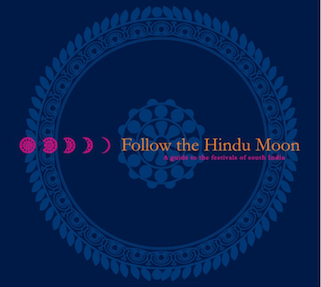|
The Indian Analyst
|
South Indian Inscriptions |
XV.- Inscriptions of Parthivendravarman or Parthivendradhipativarman, who took the head of Vira-Pandya No. 185 to 189 Varaha-Perumal, Tiruvalisvara, Ullagaikulunda temples No. 152 to 155 Vaikuntha-Perumal, Madariamman temples No. 156 to 157 Kharapurisvara, Vaikuntha-Perumal temples No. 158 to 161 On the east and north wall of the Vaikuntha-Perumal temple No. 162 to 165 Vaikuntha-Perumal, Vishnu temples at Tirumalpuram No. 166 to 170 Jalanathesvara temple at Takkolam No. 171 to 176 Subrahmanya, Vaikuntha-Perumal, Masilamanisvara temples No. 177 to 180 Siva, Varaha-Perumal temples No. 181 to 184 Tiruvalisvara, Vaikuntha-Perumal, Jalanathesvara temples No. 190 to 194 Jalanathesvara, Selliyamman, Vishnu temples No. 195 to 198 Masilamanisvara, Manikanthesvara, Vishnu temples No.
185.â ON THE NORTH BASE OF THECENTRAL SHRINE IN THE VARAHA-PERUMAL
TEMPLE AT IRUVADANDAI[1] This
inscription registers a gift of 93 sheep for burning a perpetual
lamp in the temple of Varahadeva at Tiruvidavandai by a native of
Talaisayanapuram alias Taiyyur, in the 8th year of
king Parthivendradivarman. Hail
! Prosperity ! In the 8th year of (the reign of)
king Parthivendradivarman, I, Anikilan of Talaisayanappuram alias
Taiyur (situated) in this (i.e., Amur-)kottam and in its (own)
subdivision, gave ninety-three sheep which neither die nor grow old
for one sacred perpetual lamp set up by Namban Manjan alias
Ugavaripperaiyan to (last) as long as the moon and the sun,
in (the temple of) the glorious Varahadeva at Tiruvidavandai
(which was) a devadana (village) in
Paduvur-nadu (a subdivision) of Amur-kottam. I, Vilakkan
Kandanadan, a shepherd (manradi) living in Tiruvidavandai,
having received these ninety-three sheep, bind myself to measure out
daily (one) ulakku of ghee.
We (the members) of the assembly of Tiruvidavandai
shall have this sacred perpetual lamp supervised by Kadunganaiyan
and shall see that it is maintained. Whoso (of us) acts against this charity shall incur
the sins committed by sinners (living) in the seven hundred kadam
(of land) between Ganga (the ganges) and Kumari (Cape
Comorin). The sacred
feet of those who protect this charity (shall) be on my head.
No.
186.â ON THE SAME BASE[2] Two
residents of Talaisayanapuram alias Taiyur made a present of
fifteen kalanju of gold to the image of Manavalapperumal
which they had caused to be cast, for the temple of Varahasvamin at
Tiruvidavandai (the modern Tiruvadandai).
The assembly of the village received the money in the 8th
year of king Rajamarayar and agreed to pay an annual interest of 56 kadi
of paddy on that amount. Rajamarayar
who took the head of Vira-Pandya could be no other than
Parthivendravarman. No.
152 above, from Uttaramallur, calls the same king Partma-Maharaja
who took the head of Vira-Pandya. (Line
1.) Hail ! Prosperity ! IN the 8th year (of the reign)
of king Rajamarayar who took the head of Vira-Pandya, (this is)
the writing of us (the members) of the assembly and the
residents of Tiruvidavandai, a devadana in Paduvurnadu, (a
subdivision) of Amur-kottam. (L.
2.) The two (individuals) Vaiyyodu-kilan Vaikundadigal and
his younger brother Tali Eruman of Talaisayanapura alias
Taiyyur gave . . . . . . . . . . . . . . . .of gold, to the image of
Manavalapperumal which both of them had caused to be cast[3]
for (the temple of) the glorious Varahasvamin at
Tiruvidavandai. We (the
assembly and the residents) have received this fifteen kalanju
of gold; and in payment of interest on this gold, we agree to
measure out by the eight-nali measure (kal) in the
months of Panguni and Sittirai, fifty-six kadi of
well-winnowed kuttai-paddy free from moisture and chaff, in
accordance (with the stipulation) that this (quantity)
of paddy is to be measured every year as long as the moon and the
sun (last), at (the rate of) five nali every
day. For each year of
default we admit (the default ?) and agree to measure out the
fifty-six kadi of kuttai-paddy (of that year) (one
some future occasion). (L.
7.) If this be violated (we) agree to pay as fine one-eighth pon
daily, to the king demanding it, for being credited to the court of
justice. (Even)
after paying the fine this paddy shall be measured out without
failure. Those who
raise (any) objection to this shall incur[4] the sins committed by the
sinner between Ganga and Kumari. May the sacred feet of those who protect this charity rest on
my head. We, the two
divisions (viz.,) the assembly (sabhaiyom) and the
residents (urom) of Tiruvidavandai mentioned above gave this
grant with our united consent. No.
187.â ON A STONE AT ANAIKKATTATTUR[5] In
the 9th year of king Parthivendravarman, the residents (urom)
ofAnai-Akkaraippudur made tax-free certain lands which had been
already dedicated to the srikoyil of Adityadeva in that
village, which was owned by Vaikhanasan Kalinikki-bhatta. We
have here the residents (urom) taking the place of sabhaiyom
of other inscriptions. A
technical distinction was perhaps made between these two bodies.[6] Hail
! Prosperity ! In the 9th year (of the reign) of
king Parthivendravarman, we the residents (urom) of
Anai-Akkaraippudur made tax-free the four tadi of land and
the well without excluding (any) in-lying land (and)
gave (as) archchanabhoga to this Adityadeva, as long
as the moon and the sun (exist), in the village-site (nattam)
of Pulidikkalnettur which had been (already) given as archchanabhoga
to (the temple of) Adityadeva of (i.e., worshipped by)
Vaikhanasan Kalinikkibhatta of our village, by Serupposan Eluvan, (his)
brothers and (his) junior uncle.
We gave (further) as archchanabhoga to this god
(the fields) Devakuttai and Unangarppidi in the
cultivable land of our village and a house south of this sacred
temple (srikoyil). (To)
Kalinikki-bhatta who worships this god. . . . . . . . . No.
188.â ON A SLAB SET UP IN THE TIRUVALISVARA TEMPLE AT KATTUR[7] This
inscription is dated in the 9th year of
Parthivendradhipativarman andrecords a gift of land as tannippatti[8]
by the residents of Kattur to the ambalam constructed by
Pattaiyanar, the chief superintendent of the order of perundaram.[9]
| ||||||||||||||||||||||||||||||||||||||||||||||||||||||||||||||||||||||||||||||||||||||||||||||||||||||||||||||||||







